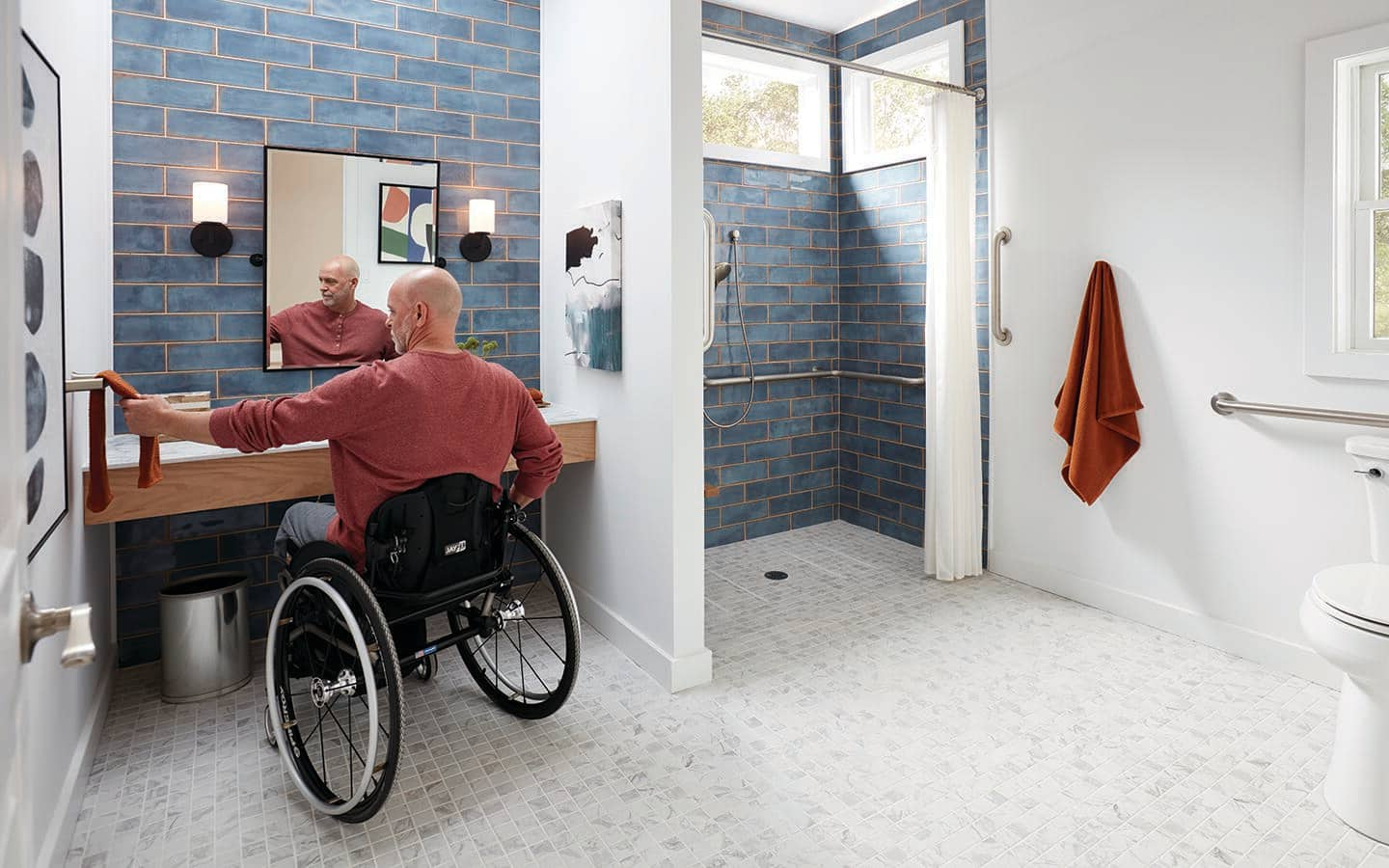Creating a safe and accessible environment is crucial, especially for individuals with disabilities. One of the key components of an accessible space is non-slip flooring that complies with the Americans with Disabilities Act (ADA). The ADA provides guidelines to ensure that public and private spaces are accessible to everyone. In this article, we will explore the importance of non-slip flooring for ADA compliance and how it can enhance safety in various environments.

Understanding ADA Compliance
The Americans with Disabilities Act (ADA) is a federal law that prohibits discrimination against individuals with disabilities. It requires public spaces, commercial facilities, and even some private entities to be accessible to people with disabilities. The ADA sets specific standards for accessibility, including guidelines for flooring surfaces to prevent slips and falls.
Why is Non-Slip Flooring Important?
Non-slip flooring plays a vital role in preventing accidents and ensuring the safety of individuals with mobility challenges. Slippery surfaces can lead to falls, which can cause serious injuries, especially for those with limited mobility. By installing non-slip flooring, businesses and homeowners can create a safer environment for everyone.
Key Features of Non-Slip Flooring
When considering non-slip flooring, there are several key features to keep in mind:
- Traction: The flooring should provide enough traction to prevent slips, even when wet.
- Durability: It should withstand heavy foot traffic and resist wear and tear.
- Ease of Maintenance: The flooring should be easy to clean and maintain to ensure long-term safety.
- Aesthetic Appeal: While safety is paramount, the flooring should also complement the overall design of the space.
Types of Non-Slip Flooring
There are several types of non-slip flooring options available that comply with ADA guidelines:
1. Vinyl Flooring
Vinyl flooring is a popular choice for its durability and slip-resistant properties. It comes in a variety of styles and colors, making it suitable for both residential and commercial spaces. Vinyl flooring is also easy to clean and maintain, making it a practical option for high-traffic areas.
2. Rubber Flooring
Rubber flooring is another excellent choice for non-slip surfaces. It offers excellent traction and is comfortable to walk on, making it ideal for areas where falls are a concern. Rubber flooring is often used in gyms, playgrounds, and healthcare facilities.
3. Textured Tiles
Textured tiles provide a stylish and slip-resistant option for various environments. They come in different materials, including ceramic and porcelain, and are available in a range of designs. Textured tiles are commonly used in bathrooms, kitchens, and entryways.
Ensuring ADA Compliance
To ensure that your non-slip flooring complies with ADA guidelines, consider the following steps:
1. Conduct a Risk Assessment
Evaluate the areas where slips and falls are most likely to occur. Focus on high-traffic areas, wet zones, and places with changes in elevation.
2. Choose the Right Flooring
Select non-slip flooring options that meet the specific needs of your space. Consider factors such as foot traffic, moisture levels, and design preferences.
3. Hire Professional Installers
Proper installation is crucial for ensuring the effectiveness of non-slip flooring. Hire experienced professionals who are familiar with ADA requirements to ensure a safe and compliant installation.
4. Regular Maintenance
Maintain your non-slip flooring regularly to ensure its longevity and effectiveness. Clean spills promptly and inspect the flooring for any signs of wear or damage.
Benefits of Non-Slip Flooring
Installing non-slip flooring offers numerous benefits for both homeowners and businesses:
1. Enhanced Safety
Non-slip flooring significantly reduces the risk of slips and falls, creating a safer environment for everyone, especially individuals with mobility challenges.
2. Increased Accessibility
By complying with ADA guidelines, you ensure that your space is accessible to all individuals, including those with disabilities.
3. Improved Aesthetics
Modern non-slip flooring options come in various designs and styles, allowing you to enhance the aesthetic appeal of your space while prioritizing safety.

Frequently Asked Questions (FAQs)
What does ADA compliance mean?
ADA compliance means adhering to the standards set by the Americans with Disabilities Act to ensure accessibility for individuals with disabilities. This includes providing features such as non-slip flooring to prevent accidents.
How can I make my home more accessible?
To make your home more accessible, consider installing automated blinds, motion sensor faucets, and ensuring non-slip flooring in key areas.
Where can I find more information on ADA requirements?
For more information on ADA requirements, you can visit the official ADA website or consult with professionals who specialize in accessibility compliance.
Ensuring that your space is safe and accessible is essential for creating an inclusive environment for all individuals. By choosing the right non-slip flooring and adhering to ADA guidelines, you can enhance safety and accessibility while also improving the overall aesthetics of your space.
This article contains affiliate links. We may earn a commission at no extra cost to you.

